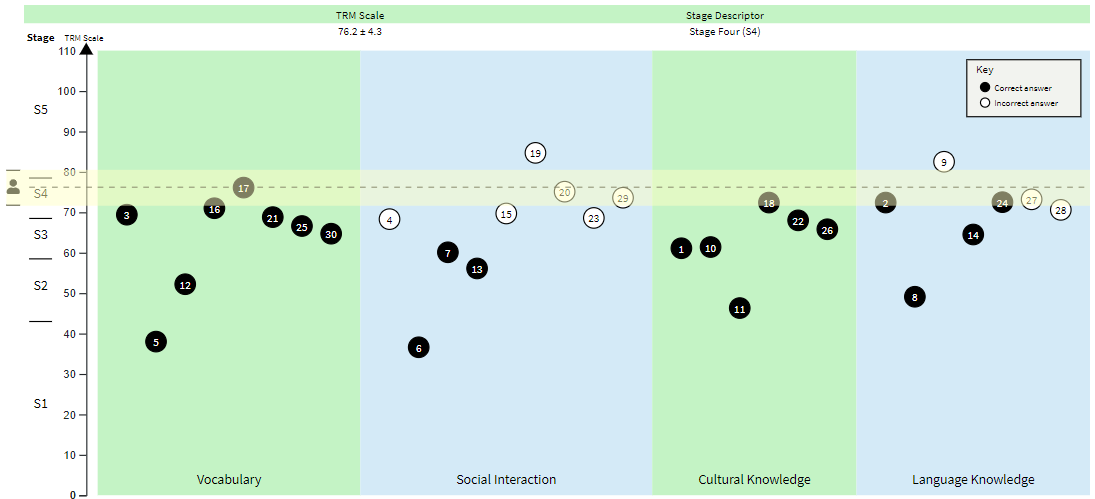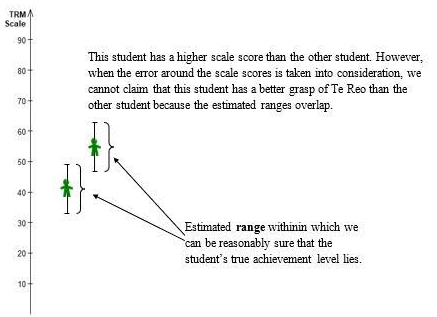The online NZCER Marking service can be used to generate three reports for the Te Reo Māori Assessment. Each one provides different insights into student or class achievement.
Individual report
The individual report uses the Te Reo Māori (trm) scale to show how a student has performed on the assessment and on each of the questions they answered.
The dashed line shows where the student is located on the scale (their overall achievement); the coloured section above and below the dashed line gives the margin of error. We can be reasonably sure that the student’s ‘true’ achievement level on the scale lies somewhere in this range.
The scale has been divided into five parts or stages. Each of these stages has been described to help aid the interpretation of scores on the assessment (see HERE for a description of the stages and a downloadable PDF copy of the same). In general, students will typically have a good grasp of the things described for the stage they score in. They will be usually be working towards mastering the ideas and skills described higher up the scale and have a strong grasp of the things described at any lower stages.
Individual circles are used to represent the questions that the student answered in the assessment. The numbers in the circles show the order the questions occurred in the assessment. Dark circles indicate a correct response. Clear circles indicate an incorrect response.
Figure 1 An example Te Reo Māori Assessment individual report

Circles located higher on the scale represent questions that are more difficult than those located lower on the scale. Students will typically answer about 50 percent of the questions located at the same place as they achieve on the scale. Typically, they will correctly answer more than 50 percent of the questions located below their level achievement and fewer than 50 percent of the questions located above their level of achievement.
When viewing the individual report online teachers can click on the circle to go to a second report focused on the question represented by the circle. This report displays the question, the student’s response, and the correct answer.
In the individual report the circles representing the questions are grouped in columns according to the aspect of te reo Māori they have been categorised under (vocabulary, social interaction, cultural knowledge, and language knowledge).
A short description of each question is provided on the right-hand side of the report.
The individual report can be used by the teacher and the student to assist in identifying areas of strength and those for development.
Scale report
The scale report for a class can be used by teachers and school leaders to see where students are located on the TRM scale relative to each other and how those students are spread across the scale.
A student’s scale score (with margin of error) should be considered as a probable 'range' on the scale rather than a precise point. This is especially important when comparing individual students’ scores. Proper comparisons between students must take the errors surrounding the scale scores into consideration, as shown in Figure 2 below.
Figure 2 The importance of considering margins of error when comparing students’ results

List report
The list report provides a summary of each student’s achievement in their assessment group or class. The report shows the students’ names along with their scale scores and associated margins of error. The students’ raw scores will usually be around the 60 percent mark. This is because of the adaptive nature of the assessment which looks to administer questions that are not too easy and not too hard. The scale score they achieve will be determined by the level of difficulty of the questions they were administered and the success they had on these questions.




